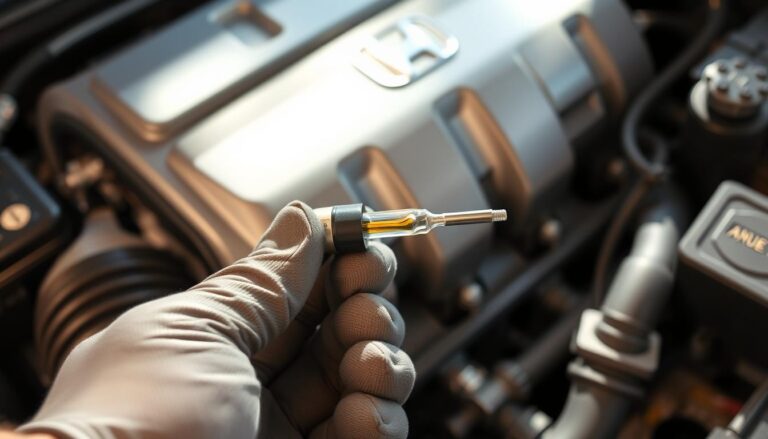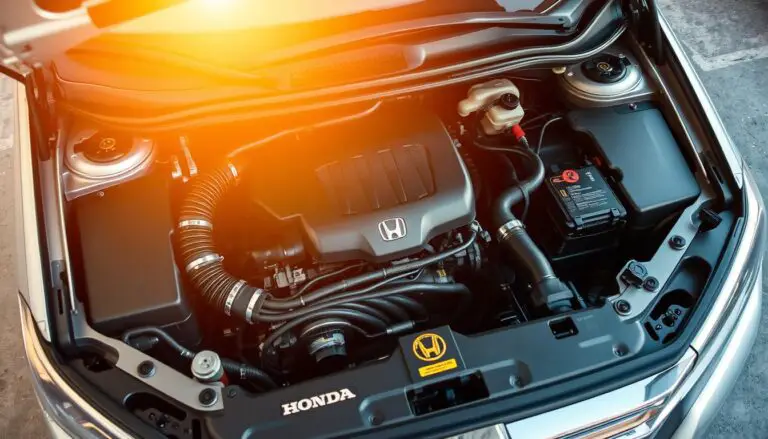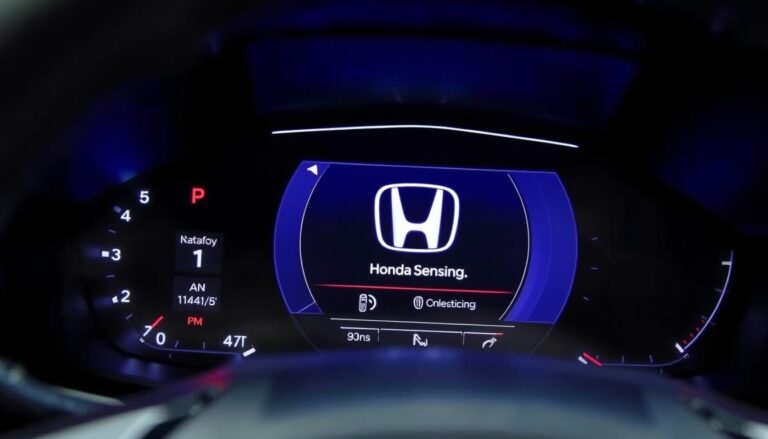Modern vehicles are equipped with advanced safety features, and Honda Sensing is one of the most innovative technologies available today. It provides drivers with a range of tools to enhance safety on the road, including collision mitigation, lane departure warning, and adaptive cruise control. However, like any complex system, Honda Sensing can sometimes malfunction, causing concern for drivers.
Understanding the importance of Honda Sensing and knowing how to address issues when they arise is crucial for safe driving. This guide is designed to walk you through the process of troubleshooting and fixing common Honda Sensing problems, ensuring that your vehicle’s safety features are functioning correctly.
Key Takeaways
- Understanding the basics of Honda Sensing technology
- Identifying common issues with Honda Sensing
- Step-by-step guide to troubleshooting Honda Sensing problems
- Tips for maintaining your Honda Sensing system
- Importance of regular checks for optimal performance
Understanding Honda Sensing Technology
Honda Sensing is a revolutionary suite of advanced safety features designed to enhance driving safety. This technology is designed to help prevent or mitigate collisions, making it a crucial component of modern Honda vehicles.
What is Honda Sensing and How Does it Work?
Honda Sensing is an advanced driver-assistance system (ADAS) that utilizes a combination of cameras, radar, and sensors to monitor the vehicle’s surroundings. It works by providing real-time feedback to the driver and, in some cases, taking corrective action to avoid or mitigate potential collisions.
Key Components of the Honda Sensing Suite
The Honda Sensing suite includes several key features: Collision Mitigation Braking System (CMBS), Adaptive Cruise Control (ACC), Lane Keeping Assist System (LKAS), and Road Departure Mitigation (RDM). Each of these components plays a vital role in enhancing vehicle safety.
Benefits of Properly Functioning Honda Sensing
A properly functioning Honda Sensing system offers numerous benefits, including enhanced safety, reduced risk of accidents, and improved driver confidence. By understanding how Honda Sensing works and maintaining its functionality, drivers can significantly enhance their driving experience.
Common Honda Sensing Problems and Their Symptoms
While Honda Sensing is designed to enhance safety on the road, some owners have reported problems with its various components. Understanding these issues is crucial for timely diagnosis and repair.
Collision Mitigation Braking System (CMBS) Issues
The CMBS is designed to prevent or mitigate frontal collisions. Symptoms of CMBS issues include:
- False alarms or warnings
- System not engaging when necessary
- Error messages on the dashboard
Adaptive Cruise Control (ACC) Malfunctions
ACC is meant to adjust the vehicle’s speed to maintain a safe distance from the vehicle ahead. Malfunctions can manifest as:
- Failure to adjust speed
- Unexpected braking or acceleration
- System not turning off or on
| Symptom | Possible Cause |
|---|---|
| False alarms | Sensor misalignment or dirt |
| System not engaging | Software glitch or sensor issue |
| Unexpected braking | Faulty radar or camera |
Lane Keeping Assist System (LKAS) Problems
LKAS helps keep the vehicle centered in its lane. Issues with LKAS can include:
- Steering wheel vibrations or jerks
- System not detecting lane markings
- Incorrect steering interventions
Road Departure Mitigation (RDM) Failures
RDM is designed to prevent the vehicle from leaving the road. Failures can manifest as:
- System not alerting the driver
- Incorrect steering interventions
- Error messages related to RDM
Recognizing these symptoms is the first step in addressing Honda Sensing problems. In the following sections, we’ll delve into diagnosing and fixing these issues.
Diagnosing Honda Sensing Issues
Diagnosing Honda Sensing issues requires a systematic approach to identify the root cause of the problem. This process involves several key steps that help you pinpoint the issue and take corrective action.
Reading and Interpreting Error Codes
The first step in diagnosing Honda Sensing issues is to read and interpret any error codes stored in the vehicle’s onboard computer. These codes can provide valuable information about the nature of the problem, guiding you toward the affected component or system.
Visual Inspection of Sensors and Components
A thorough visual inspection of the Honda Sensing system’s sensors and components is crucial. Look for any signs of damage, misalignment, or obstruction that could be causing the system to malfunction. Ensure that all sensors are clean and free from debris.

Testing System Functionality
To further diagnose the issue, you need to test the Honda Sensing system’s functionality. This can be done through simple road tests and by using Honda’s Driver Information Interface.
Simple Road Tests to Identify Problems
Conducting a road test allows you to observe the system’s behavior under real-world conditions. Pay attention to any anomalies or warnings displayed on the dashboard.
Using Honda’s Driver Information Interface
Honda’s Driver Information Interface provides detailed information about the system’s status and any error messages. Use this interface to gather diagnostic data and understand the system’s performance.
How to Fix Honda Sensing Problems: Expert Solutions for Common Issues
Understanding how to fix Honda Sensing issues can save you time and money. Many Honda Sensing problems can be resolved through simple maintenance tasks or DIY fixes.
Cleaning Camera and Radar Sensors
One of the most common issues with Honda Sensing is dirty or obstructed sensors. Cleaning the camera and radar sensors can often resolve many problems. Use a soft cloth and mild soap solution to gently clean the sensors. Avoid using harsh chemicals or abrasive materials that could damage the sensors.
Resetting the Honda Sensing System
Sometimes, simply resetting the Honda Sensing system can resolve the issue. To do this, turn off the engine, wait for a few minutes, and then restart the vehicle. This can reset the system’s calibration and potentially fix minor glitches.
Software Updates and Firmware Fixes
Outdated software can cause Honda Sensing malfunctions. Check with your local Honda dealership for any available software updates or firmware fixes. Updating the software can resolve known issues and improve system performance.

Fixing Camera Misalignment Issues
Camera misalignment can cause Honda Sensing to malfunction. To fix this, ensure that the camera is properly aligned and adjust it if necessary. Consult your vehicle’s manual for instructions on how to adjust the camera alignment.
Resolving Radar Sensor Obstructions
Radar sensor obstructions can prevent Honda Sensing from functioning correctly. Check the radar sensors for any debris or obstructions and clean them as needed. Ensure that the sensors are properly aligned and not damaged.
By following these expert solutions, you can often fix Honda Sensing problems without needing professional assistance. Regular maintenance and checks can also help prevent issues from arising in the future.
- Regularly clean camera and radar sensors
- Check for software updates
- Ensure proper camera alignment
- Inspect radar sensors for obstructions
Advanced Troubleshooting and Repairs
When Honda Sensing issues persist, advanced troubleshooting techniques become essential for resolving complex problems. This involves a more in-depth analysis of the system’s components and their functionality.
Sensor Recalibration Procedures
Sensor recalibration is a critical step in advanced troubleshooting. Proper alignment and calibration of sensors ensure that the Honda Sensing system functions accurately. This process may require specialized tools and technical knowledge.
Replacing Faulty Components
In some cases, Honda Sensing issues arise from faulty components that need replacement. Identifying the defective part requires a thorough diagnosis, often involving error code analysis and visual inspections.
Dealing with Electrical Connection Problems
Electrical connection issues can also cause Honda Sensing malfunctions. Inspecting wiring and connectors for damage or corrosion is crucial. Repairing or replacing these connections can resolve many problems.
When to Seek Professional Assistance
While DIY repairs can be cost-effective, complex issues may require professional intervention.
“If you’re unsure about the diagnosis or feel uncomfortable with the repair process, it’s wise to consult a certified Honda technician.”
Their expertise ensures that repairs are done correctly and safely.
Advanced troubleshooting and repairs demand a comprehensive understanding of the Honda Sensing system. By applying these techniques, many complex issues can be resolved effectively.
Cost Considerations for Honda Sensing Repairs
When it comes to fixing Honda Sensing issues, the cost can differ greatly depending on whether you opt for DIY repairs or visit a dealership. Understanding these costs is essential for making an informed decision.
DIY Repair Costs vs. Dealership Expenses
DIY repairs can be cost-effective, as they eliminate labor costs associated with dealership services. However, if you’re not experienced with automotive repairs, you might end up spending more on trial and error or correcting mistakes. Dealership repairs, on the other hand, come with a higher upfront cost but offer the assurance of professional service and genuine parts.
Warranty Coverage for Honda Sensing Components
If your vehicle is still under warranty, certain Honda Sensing components may be covered. It’s essential to review your warranty documentation or consult with your dealership to determine the extent of the coverage.
Insurance Considerations for Advanced Safety Systems
Some insurance providers offer discounts for vehicles equipped with advanced safety features like Honda Sensing. Additionally, the cost of repairs might be covered under certain policies. It’s advisable to check with your insurance provider to understand their policies regarding advanced safety systems.
By considering these factors, Honda owners can better navigate the financial aspects of maintaining their vehicle’s advanced safety features.
Conclusion
Proper maintenance of Honda Sensing is crucial for ensuring your vehicle’s advanced safety features function correctly. By understanding the common problems and their symptoms, you can take proactive steps to diagnose and repair issues efficiently.
Regular cleaning of camera and radar sensors, resetting the system when necessary, and keeping software up-to-date are simple yet effective measures for maintaining Honda Sensing. For more complex issues, knowing when to seek professional assistance can save time and reduce costs.
By following the steps outlined in this guide, you can ensure your Honda’s advanced safety features continue to provide optimal protection on the road. A well-maintained Honda Sensing system is key to enhancing your vehicle’s safety and performance.
FAQ
What is Honda Sensing and how does it work?
Honda Sensing is a suite of advanced safety features designed to help prevent or mitigate collisions. It uses a combination of cameras, radar, and sensors to detect potential hazards and alert the driver or take corrective action.
What are the common problems with Honda Sensing?
Common issues with Honda Sensing include problems with the Collision Mitigation Braking System (CMBS), Adaptive Cruise Control (ACC), Lane Keeping Assist System (LKAS), and Road Departure Mitigation (RDM).
How do I diagnose Honda Sensing issues?
Diagnosing Honda Sensing issues typically involves reading and interpreting error codes, visual inspections of sensors and components, and testing system functionality.
Can I fix Honda Sensing problems myself?
Many Honda Sensing issues can be resolved through simple maintenance tasks, such as cleaning sensors or updating software. However, more complex issues may require professional assistance.
How much does it cost to repair Honda Sensing?
The cost of repairing Honda Sensing systems can vary significantly depending on whether the work is done DIY or through a dealership. Warranty coverage and insurance considerations may also apply.
What is the importance of cleaning camera and radar sensors in Honda Sensing?
Cleaning camera and radar sensors is crucial for maintaining the proper functioning of Honda Sensing. Dirty or obstructed sensors can lead to system malfunctions or false alerts.
How do I reset the Honda Sensing system?
Resetting the Honda Sensing system typically involves restarting the vehicle and recalibrating the sensors. The exact procedure may vary depending on the specific Honda model and year.
Can software updates fix Honda Sensing problems?
Yes, software updates can often resolve issues with Honda Sensing, especially those related to system functionality or sensor calibration.


